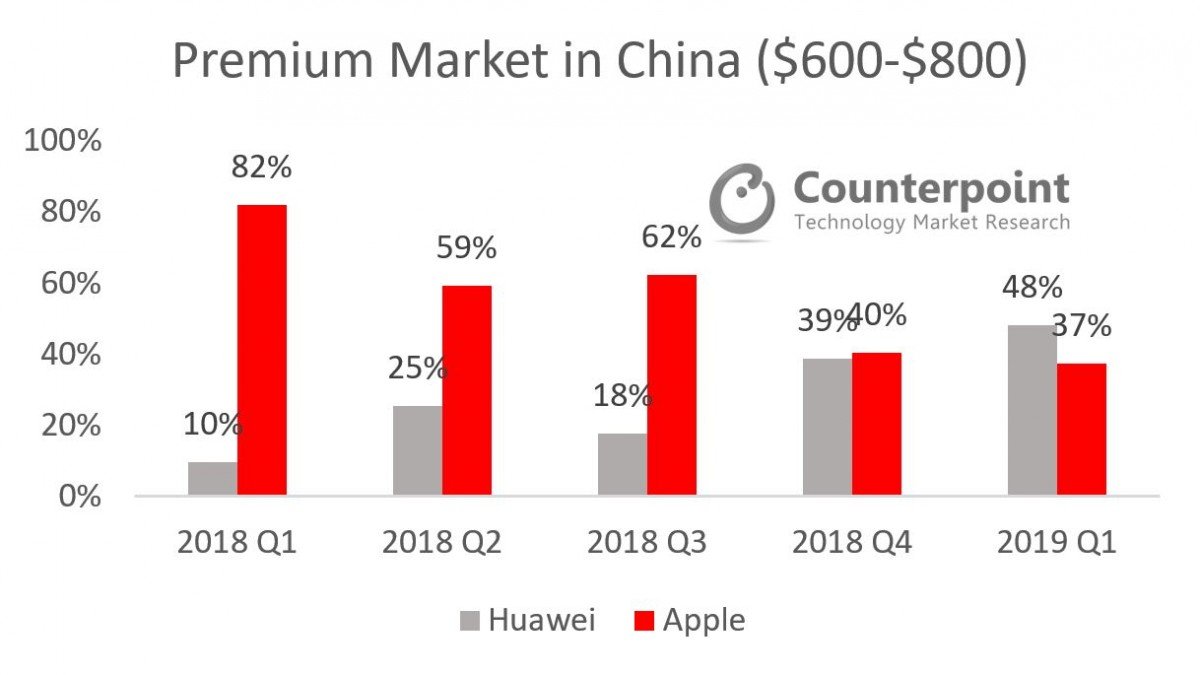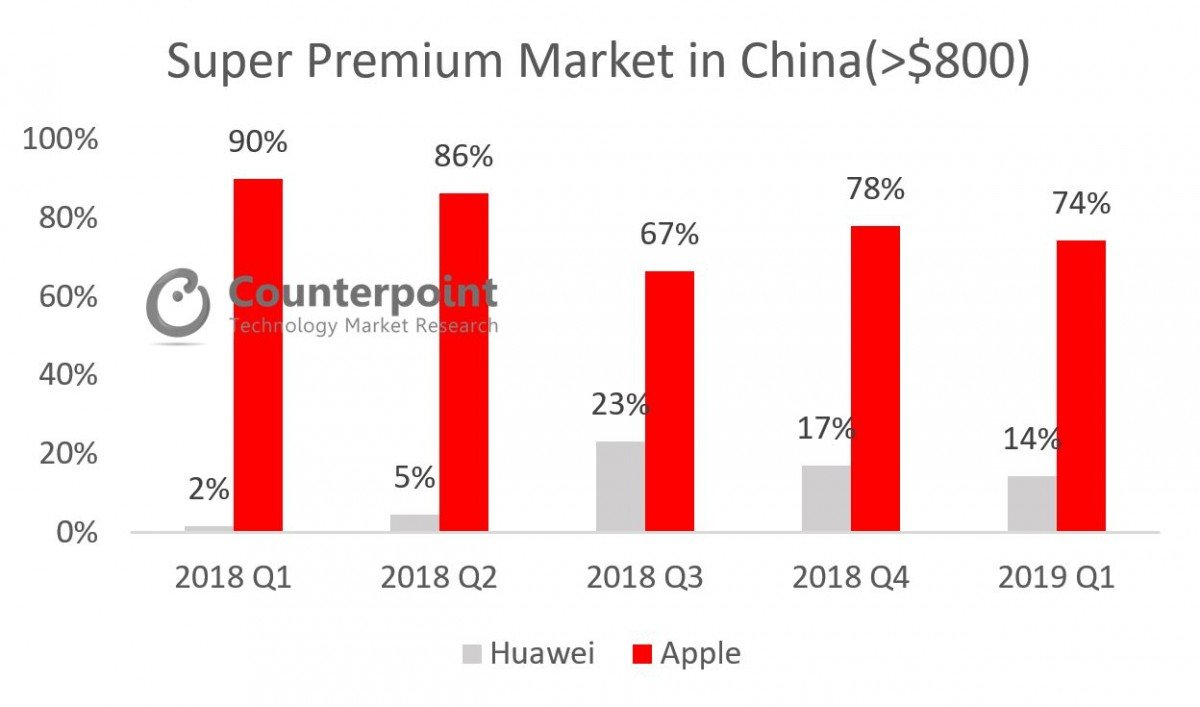International Circuit
Can Huawei’s Success Story In China’s Premium Segment Continue?
Posted by Counterpoint Research
In Q1 2019, Huawei overtook Apple as the second largest smartphone brand globally. In China, Huawei has remained the number one smartphone brand since Q4 2017. Over the years, it has also successfully made inroads into the premium smartphone segment with its flagship devices under the P series and the Mate series. Today, Huawei is the only brand after Apple and Samsung to have a double-digit market share in the premium smartphone segment. In its home market, Huawei is already the leader in this segment.
Ever since Samsung’s fall in China due to multiple factors, such as the rise of local brands that can better satisfy Chinese consumers and the recall of Galaxy Note 7, Apple was the leading brand in the premium (US$600-US$800) and super-premium (>US$800) segments. However, Huawei has caught up quickly in the premium segment and has also made significant progress in the super-premium segment. In Q1 2019, Huawei surpassed Apple’s market share in the premium market for the first time with strong traction from the newly released Mate 20 and Mate 20 Pro 128GB. These two models outsell the iPhone XR and iPhone 8 series in the same price segment.

Although Apple still dominates the super-premium segment in China, Huawei has risen to a 14% market share in Q1 2019 from a mere 2% in Q1 2018 driven by models like Mate 20 Pro 256GB and Mate 20 RS Porsche Design.

Last month’s trade ban by the US government came as big jolt to Huawei. We expect the trade ban to impact Huawei’s sales in overseas markets significantly. However, so far, it has not done any damage to Huawei’s reputation in China. In fact, during our retail visits, Huawei’s sales representatives said smartphone sales in China actually grew following the event. An OPPO sales representative from a store located on the same floor as the Huawei store has confirmed this and mentioned that some OPPO fans have in fact turned to Huawei. The Huawei store also had the most footfall in the mall we visited. It appears consumers in China have no concerns that the inability to purchase key components from the US will impact Huawei. Further, they are confident that Huawei’s list of domestic back-up suppliers is capable of filling the void.
What is the secret behind Huawei’s continued strong reputation in China? The answer lies in the hard work put in by Huawei over the years. Huawei’s success in the premium market did not come in a day. Multiple factors have contributed to Huawei’s success. First of all, Huawei made heavy investments in smartphone R&D. All of its premium phones come with Huawei’s self-developed Kirin processors. The latest Kirin 980 used in Mate 20 series is the first system-on-a-chip (SoC) to be made using the 7nm process node from TSMC. The SoC also offers faster download speed, better AI processing power with a dual NPU design, and better camera performance with an additional ISP. As a result, Huawei made a name for itself for its superior camera performance as well as its long battery life. Secondly, Huawei is gaining more market share at the expense of Apple. Apple’s market share in China has continued to decline in recent quarters due to the lack of significant innovations in its latest models and a wide selection of alternatives from local brands. Finally, Apple’s iOS does not have the same stickiness in China as it does in many other countries. The ban of Google’s services in China, as well as the omnipresent functions of WeChat, mean that users do not face a big difference in using iOS or Android. It makes the switch even easier.
In the near-term, we expect Chinese patriotism, emanating out of the China-US trade tensions, will drive even more sales for Huawei. However, if the trade ban continues, Huawei’s could suffer in the premium segment as the supply of key US components is crucial in the premium segment.―CT Bureau














You must be logged in to post a comment Login